THE BUS TRIP AROUND TOWN
|
This was a good day. In fact, it was a wonderful day!
The Group decided to get a ticket for one of the ubiquitous Hop
On/Hop Off Tour Buses and see the sights of the city together. I
have to tell you I was very impressed with the quality of this
bus experience.
Marla and I took a similar bus trip in Boston on our New England
Cruise in 2006, but it was paltry compared to this. One
excellent feature was the use of head phones. As you cruise
around the city, the head phones constantly play attractive soft
jazz music. Whenever you get to a point of interest, the driver
hits a button. The music is paused and a pre-recorded message
concerning the upcoming point of interest kicks in. Once you
pass the statue or tower or landmark, the hypnotic music kicks
back in. You can't help but relax and just chill out. What a
lovely way to spend a beautiful afternoon!
It took me a while to figure it out, but the name of the game is
to get to the top level of the bus. You can't see much when you
sit below. However, when you get on the bus, the rule is you
have to sit on the ground level until a spot opens up on top.
Fortunately, at every stop a few people get off to visit the
various special locations. This gives you the opportunity to
move upstairs.
Once you are on top, then the fun really begins. Of course, the
main attraction is the chance to see all the beauty of Barcelona
as you pass by. For example, you can a
daytime look at the Magic Fountain and the Spanish Plaza.
However, there are other pleasures as well. The
beautiful music is very relaxing. In addition, the cool breeze,
the blue skies and the sun make it seem like you are laying out
at the beach, but best of all, no sand!
When you get to a spot you want to inspect more closely, you
just hop off and wander around to your heart's content. When you
are ready to get back on, the longest wait of the day for the
next bus was no more than 15 minutes. Usually the wait was
closer to 5 minutes. This system worked to perfection.
I rode that bus all day long on Friday. I had so much fun that I
went and did it again on Sunday as well. Many times I wondered
why I had never seen anything like this double-decker bus in
Houston. Just out of idle curiosity, I looked on the Internet
for Houston Bus Tours. It turns out there are bus tours around
Houston, but you stick with one bus for the day. In other words,
it is more like a guided tour. Oh well.
Barcelona definitely has lots of interesting things to look at.
There are towers and open air sculptures and gardens and parks
everywhere. We were treated to breath-taking views of one the
prettiest cities in the world. Barcelona is built in a valley
with large hills surrounding it. One of the most important hills
is Mont Juic, named for the Jewish cemetery nearby.
Mont Juic was
home to the Olympic Stadium from the 1992 Olympics.
Barcelona 1992 was definitely one of my famous Olympics ever. It
was sheer magic! My eyes were glued to the TV for the entire two
weeks. One special feature of the Barcelona Olympics was the
debut of the "Dream Team" with Michael Jordan, Magic Johnson,
Larry Bird, David Robinson, Clyde Drexler and so many other
great players. It will go down as the greatest team in Olympic
history, much less the history of the planet.
Oddly enough, the one moment everyone remembers is not the
blowout victories, but rather Charles Barkley's idiotic decision
to elbow a helpless, skinny player from Angola in the throat.
Replay after replay failed to reveal any apparent reason for
Barkley's violation.
As I remember, even before the Dream Team's game against Angola
in the 1992 Olympics, Barkley was already in a bad mood. Barkley
was asked what he thought about the team from Angola. He
famously replied, "All I know about Angola is Angola's in
trouble."
(Rick's Note: for a truly wicked 'guilty pleasure', I found a
wonderful video. It has 7 minutes of Magic Johnson feeding
Barkley, Bird, and Jordan for one dunk against Angola after
another. Not only does it show a 31 consecutive point run on
Angola, you get to relive Barkley's silly
Olympic elbow incident.)
The beauty of traveling with the group paid off for my friend
Ricardo. Early in the morning, Ricardo had been the last person
in our group to get on the bus... someone has to be at the end,
right? For some reason, the bus driver closed the door just
before Ricardo could step on. I was paying attention and raised
my voice for the driver to stop the bus. Some young girl tried
to argue with me that Ricardo could simply catch the next bus,
but I was in no mood. I was worried that Ricardo would be
separated from the group for the entire day, so I insisted they
stop. Finally they did and Ricardo was allowed to join us.
That
was my good deed for the day. We all watch out for each other.
|
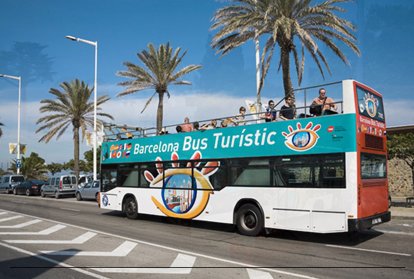
The name of the
game is get to the top level
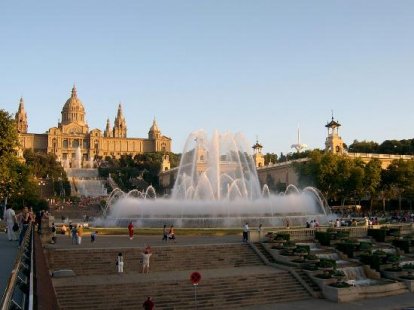
A daytime view of the Magic Fountain
 |
THE SAGRADA FAMILY TEMPLE
AND ANTONIO GAUDI
|
Our first stop was the impressive Sagrada Family Temple. This
amazing structure was first designed by a hero born and raised
in Barcelona, architect Antonio Gaudi (rhymes with "howdy").
Before our trip began, Marla had "Gaudi" on the brain. Every now
and then, I would ask Marla what she wanted to do in Barcelona.
She would get this mystical look in her eyes and say, "Go see
Gaudi!"
Gaudi who? The only "Gaudi" I ever heard of was Curt Gowdy, a
football announcer back when I was growing up. Did Curt Gowdy do
architecture on the side? I doubted it. Seriously, until Marla
started foaming at the mouth, I had never heard of Antoni Gaudi
in my life. I didn't bother to read up on him; I figured I would
learn who he was when we got to Barcelona.
So now we are on the bus going to see something called 'Sagrada'.
I realize it shows my ignorance, but I had no idea what 'Sagrada'
was either. Does he play goalie for the Dynamo soccer team?
The bus turns the corner. Suddenly the weirdest, biggest,
strangest looking building I have ever seen in my entire life
comes into view. This thing - whatever the heck it is - is so
tall that it appears to stretch to the moon.
What on earth am I
looking at? Is it a space ship?
Or maybe it is a castle?
Where's
the moat?
I stare and I stare some more. Finally I give up. I say, "Marla,
what in the world is that building?"
Marla gives me that "Look" (think 'Jane, you ignorant slut'),
then explains as patiently as possible that this is the Gaudi
Church she has been anxious to see for the past year.
Church? This castle thing is a church? You mean this Gaudi guy
did this weird building? Whoa.
I stared at the massive bizarre building long and hard. This
moment was my first inkling that Gaudi was something out of this
world. I was having a hard time believing this was a church.
This is hands down the WEIRDEST CHURCH I have ever seen!!!!
Maybe if I paid attention once in a while I would have learned
something in advance. Now Marla grew quiet. Uh oh. Quiet. Quiet
is not Marla's natural state. That's always a real bad sign. Now
what?
Marla said, "I spent a lot of time writing an article on Sagrada
for my Barcelona Trip promotion. You personally pasted
the story and my pictures onto
the web site. How do you publish my material and not manage to
read it?"
Hmm. Marla might have a point there. She spends
days-weeks-months scouring the Internet for information to share
about every important place to visit on each cruise. Then one
day it is time to post her material on the SSQQ Travel web site.
That's my job.
This is a lot of work. It usually takes me four or five hours to
build the page. I am always in such a hurry to get the job done
that I just cut and paste her copy, then immediately start
looking for the best picture to stick in next to it. Once it is
posted, I never actually read it. I mean, look at it this way. I
don't need to be sold on the trip. I'm already going!
I looked at Marla and wondered if this argument would rescue me.
She was still frowning at me. Nah. No use. Marla put a lot of
work into that write-up. She's right; I should have read her
stuff. I always want her to read my stuff; that door should
swing both ways. And it's our anniversary today no less. I am an
unworthy husband. A strong pang of guilt surges through my
limited male brain.
All right, so I screwed up. Maybe I should pay a little
attention and figure out who this Gaudi guy is before my wife
leaves me for Frank Billingsley. So
I opened up my little guide book.
"Antoni Gaudi was a unique, universal artist who ahead of his
time. He was able to invent a whole new world of fascinating
shapes and colors through his architecture. His most famous work
was the Sagrada Familia Church."
I guess that proves it. The travel book says it's a church.
There before me stood the Sagrada Familia Church. With its four
bizarre towers and its many complex facades, this building was
beyond a doubt the weirdest, coolest, most incredible church I
have ever seen in my life.
The more I stared at it, the more overwhelmed I felt. The sheer
immensity of this imposing building was starting to make an
impression on my mind. Suddenly I realized that I didn't need to
read anything further. Whoever designed this church had to be a
genius. This place was amazing!
The group hired a guide to take us through the structure. I
began to learn all sorts of interesting tidbits.
I discovered the "Sagrada Familia" is Spanish for the "Sacred
Family" - Jesus, Mary, and Joseph. Hmm, I've heard of them.
Okay, there's one mystery solved.
I learned that Gaudi dedicated his life to building this church.
Gaudí intended this church to be the "last great sanctuary of
Christendom".
My jaw dropped when I learned this giant temple has been under
construction since 1882. I did some quick math. They have been
building this place for 127 years.
Then I learned they don't expect it to be completed for another
20 to 80 years.
Eighty years? When was the last time you heard of a building
that took 200 years to build?
At the rate they are moving, the Second Coming is a good bet to
precede completion. Or for that matter Gaudi, who died in 1926,
might just be reincarnated in time to add the finishing touch on
his masterpiece. For that matter, maybe he's back already.
Today, the Sagrada Família Temple attracts flocks of visitors.
The ever-present scaffolding and the huge cranes are permanent
reminders that this is indeed a work in progress. Fortunately,
what has already been built is so fascinating and so impressive
that no one seems to mind the unfinished state of the church.
I stare in amazement at the four magnificent spires. Each spire
has an odd resemblance to a stalagmite you might see hanging in
an underground cave except that now it's going in the other
direction. The spires seem to soar to the heavens.
This edifice
is a church like no other you will ever see. But it definitely does
the job. The Sagrada
Temple is awe-inspiring.
(Rick's
Note: When Gaudi died, he left behind an unfinished Temple.
As you can see in the picture on the right, the structure on the
side does not seem to match the main building. Controversy
surrounds the building. Today new construction materials are being
used which some feel Gaudi himself would not have used. When you
visit the building you will see the contrast in the stone color
between the front and back of the building. Also the actual style of
construction appears somewhat different between the new and old
parts of the building. Many feel that the building has strayed
from Gaudi's original vision.)
|
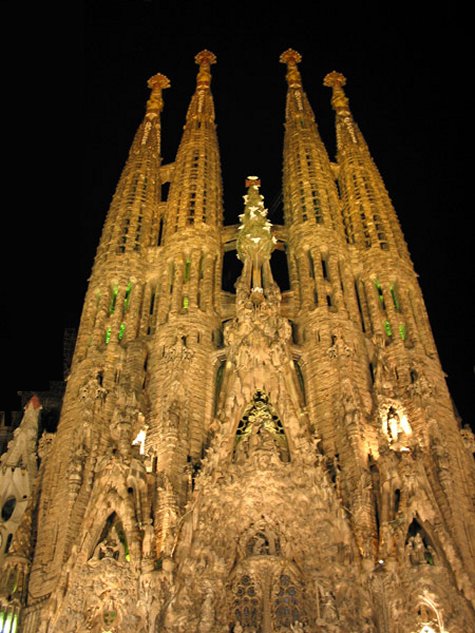
The
magnificent Sagrada Family Temple
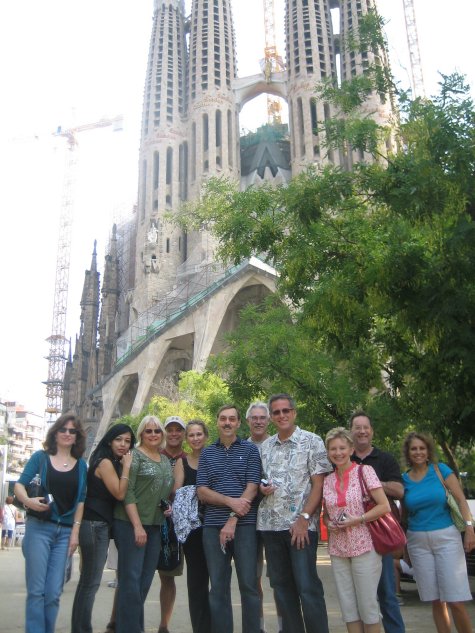
Albertin, Claudia,
Joan, Ricardo (Rick Elizondo),
Jean, Bruce, Rick, Kurt, Joe, Marla
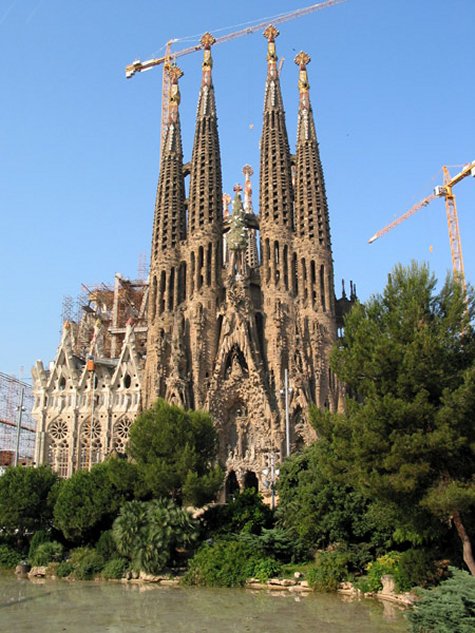 |
AN ODD INCIDENT AT THE RESTROOM
|
And now we proceed from the sublime to the silly.
The guide we hired said it would be 14 more minutes till she
began her tour. I decided a good use of my time would be to use the
restroom. Joan and I walked into the Sagrada building to scout
for the restroom. No such luck. The woman at the door did not
speak English, so she simply pointed to another door. Where's
Mara when I need her?
Joan and I walked out the door. We saw a very interesting
building below, so we walked to it. I walked through the
building and discovered all sorts of interesting facts about
Gaudi for my effort. I later learned this building had been his
office and sleeping quarters as well.
Meanwhile Joan and I haven't had much luck finding the restroom.
As we leave Gaudi's office, that's when I notice a long line of
women standing nearby. They all have dark, unhappy looks on
their faces. Hmm. Where have I seen that look before?
Aha! I have indeed seen that look before. Those women are
unhappy because they have to 'go' and they are getting
desperate.
So Joan and I stroll over to the line. Sure enough, they are
waiting impatiently to use the restroom. I notice there aren't
any men in line. I have long believed that women are superior to
men in many ways, but when it comes to this particular event,
men clearly have all the advantages.
So with my smug little smile I trot up to what I think is the
men's room. And why did I think it was the men's room? Because
there was no line!
Except when I got to the door it didn't say "men's room". All it
had was a picture of a man. Or did it?
I noticed that picture had been deliberately scratched in a
certain 'private' area. That made identifying the 'gender' of
the figure more difficult. Just to be sure, I hesitated a moment
longer to take a second glance at the picture before opening the
door.
At this exact moment, the door opens... a woman walks out! We
are literally eye to eye!
I am mortified; I am shocked
at my huge mistake. I believe that I have come within a split
second of entering the women's restroom! I
am also deeply confused. My second glance at the mutilated
stick figure had indicated it was probably a man all along.
Then
I got it. I had been in the right place all along. This lady was
in the wrong place and I knew why.
The woman saw the initial look of sheer horror on my face and
was embarrassed. She began to apologize profusely. She said she
was very sorry that she had upset me, but her need had been so
great she had been forced to take emergency measures.
I grinned at her and told her not to worry. I didn't mind her
using the men's room at all. The look on my face had not been
anger at her but rather total consternation at having a woman
walk out of the restroom at the exact instant I had just decided
it was safe to enter!
The lady realized what had happened. Together we had a good
laugh. Then I screwed up my courage and entered only to find two
more women coming out of the men's stalls! This is a completely
different world over here. I had no idea that Euro-peein' could
be so exciting!
|

 |
GAUDI'S AMAZING PARK GUELL
|
At the time of his death in 1926, Antonio
Gaudí was arguably the most famous architect in the world. He had
created some of the greatest and most controversial masterpieces of
modern architecture that were as exotic as they were outrageous.
A modern day mystic, Gaudi preferred to hide from
all publicity. Consequently little is known about the
shadowy figure behind the swirling, vivid buildings that inspired
the Surrealists. A fervent Catholic with an unstinting love for
Catalonia, his homeland, an innovator who was profoundly orthodox,
and a hermit who chose lifelong celibacy,
having been rejected by the woman he loved, Gaudí was both brilliant
and eccentric.After we finished at Sagrada, the group hopped back on the bus
and rode over to Park Guell. It just took one look to realize
this weird place must have been designed by our friend Gaudi as
well.
Gaudi's structures are so different than anything I have ever
seen before that even with my limited knowledge I can recognize
his work. I mean, if you are in Barcelona and it looks weird, it
must be Gaudi (although I have to admit some of Joan Miro's work
and the bizarre Agbar Tower are pretty weird too.
It must be the
Gaudi influence!)
Have you noticed how many times I have linked the word 'Weird'
and 'Gaudi' together?
I am not going to beat around the bush. Gaudi's architecture IS
WEIRD!! You either like it or you don't. I like his stuff a lot,
but then everyone knows I am strange, so this revelation is not
much of a surprise.
(Rick's Note: I have included several pictures from Park Guell in
this write-up, but you might enjoy seeing more pictures. Here is
a link to many more sensational
Park Guell pictures)
At first glance, Park Guell is a colorful Candy Land full of
gingerbread house palaces. I mean, everything Gaudi designed
here looks like something from "Alice in Wonderland" or maybe a
Disneyland-style Amusement Park.
Park Guell is set on a hill that overlooks practically all of
Barcelona. The scenery alone is breathtaking. However, it is the
odd and charming Gaudi touches you see everywhere that explains
the overwhelming popularity of the park. There are people
everywhere as I walk around. The cameras are working overtime
and people are studying the odd shapes with intense curiosity.
The beautiful and quite comfortable serpentine bench is filled
with foreigners and locals alike. The park's famous mosaic
lizard-dragon-salamander-whateveritis has become synonymous with
the city itself.
Judging by the glee on everyone's faces as they explore this
lovely park, you would never guess that this area was once
considered Gaudi's greatest failure. This contradiction goes
right to the heart of Gaudi's story, a career spent fighting for
his own creativity against the forces of conformity.
The strange shapes - hyperboloids and paraboloids - that are the
trademarks of Gaudi's work are completely foreign to me. I have
never seen anything like Gaudi's work before. I cannot imagine a
greater departure from mainstream architecture. Let's face it,
Gaudi's work is WEIRD by today's standards. Imagine what people
thought of his work a hundred years ago!
(Rick Archer's Note: By the way, to answer your question, no, I
don't know what a hyperboloid or a paraboloid is either, but I
think both words describe Gaudi's work perfectly.)
Park Guell seems as if it were taken from the pages of a
fairytale: strange, eccentric, even dream-like, but
undeniably beautiful. A stroll through the park will awaken
even the sleepiest imaginations. The peculiar shapes and
daring color combinations mixed in with the park’s
vegetation create a unique world to which visitors feel
irresistibly drawn. Every corner of the park
displays the architect’s passion for nature’s forms: Gaudí
wanted human intervention in this forest to blend in with
the landscape, to complement it, and he certainly achieved
this. Snails, mushrooms, leaves, flowers, tree trunks and
elephants appear constantly in the mosaics and in the
architectural forms.
The original idea for Park Guell was conceived in 1900, when
Eusebi Guell purchased land on the mountain of Carmel
which at
that time was on the outskirts of Barcelona.
He put Gaudi in charge of developing the
site to
copy the English “garden city” model (thus the word “park”),
In addition,
Gaudi would build a few homes in idyllic surroundings with wealthy
people in mind who wanted to get away from the crowded
streets and insalubrious life of the city. Three kilometers
of paths were built along with a plaza, stairways, the
concierges’ pavilion and a model house to tempt potential
residents. However, no one came
near the place. After 14 years, seeing that the development
was a commercial failure, it was abandoned and donated to
the city council, which then converted it into a public
park.
Obviously the hundreds of people around me had no
idea this place was a failure. As I stared at Gaudi's
"rejected" work, I had a flash. My mind raced to one
of my favorite books from college, The Fountainhead by Ayn
Rand.
They always say that Ayn Rand based her book on Frank Lloyd
Wright, but I have to say that the story of Antonio Gaudi seems
like a pretty eerie parallel of Rand's protagonist Howard Roark
as well.
In The Fountainhead, Howard Roark is a brilliant architect who
dares to stand alone and defy the conventional methodologies of
his era. In the end, Roark ultimately finds a niche for his work
and is vindicated for his unusual style. Considering Gaudi was
considered a crazy dreamer in his youth and is now one of the
most celebrated architects of all time, I would say the
description of Roark fits Gaudi as well.
In life, there are many of us who give up on our being and our
own ways of working just because our personal style doesn't
conform to what the people around us believe is the correct way
to act. Many of us don't have the courage to proceed in the face
of all the criticism. So we take the easy way out and learn to
follow the accepted way of doing things even though our heart
begs us to try a different route.
If you stop and think about it, innovation dies when society
insists on total conformity. It takes people like Gaudi to
strike off in new directions. Remember, amateurs built the Ark.
Professionals built the Titanic. The professionals aren't always
right. If you think you have a better idea, never be afraid to
try something new.
Sorry to say, when it comes to architecture I am just as bad as
the rest. I judge everything based on what I am used to seeing.
I always thought modern architecture is all about glass, steel,
straight lines and sharp angles. Obviously Gaudi rejects that.
He is all about curves and waves and bizarre mosaic decorations.
Gaudi's work is totally off the beaten path. I am thrilled to
see the world can be charmed into accepting such an
unconventional style and recognize the genius behind it. Maybe
there's hope for the human race after all.
Like the fictional Howard Roark, Gaudi was a non-conformist who
braved a lifetime of criticism to create stunning architecture.
Today Antoni Gaudí's incredible buildings bring millions of
tourists to Barcelona each year. And yet a century ago he died a
figure of great ridicule!
Gaudí's non-conformity was already visible in his teenage years.
He barely made it through Architecture College. Upon graduation,
one of his professors noted, "Who knows if we have given this
diploma to a nut or to a genius? Only Time will tell."
Gaudi faced rejection his entire life. Park Guell is a perfect
example.
As I studied the story of the charming Park Guell, I
couldn't help but dwell on the reasons why this
fascinating project was basically a complete failure when it was built. Gaudí's project in the Park was to build a residential community
whose residents would love where they lived. It was very
expensive project that was never finished for a simple reason -
no one wanted to live there! His architecture was not very
popular among the elite of his own time and place. Gaudi's
designs were too radical. All the people with 'good taste'
avoided it like the plague. Consequently there were few takers.
Only three plots out of 60 were ever sold and only two houses
built.
Perhaps that is for the best since now we all get to enjoy it.
However I am sure the cold shoulder given his project must have
hurt terribly at the time.
Gaudí's originality was often ridiculed by his peers. His fellow
citizens referred to the Casa Milà (another Gaudi classic) as
"The Quarry". George Orwell, who stayed in Barcelona during the
Spanish Civil War, admittedly loathed Gaudi's work. Criticism
abounded.
Indeed, at first Gaudi could only count on the support of one
man, the rich industrialist Eusebio Güell. Count Güell was a
Catalan patriarch who profited greatly from the industrial
revolution in Catalonia in the late 19th Century.
Güell became a patron to architect Antonio Gaudí. They met at
the start of Gaudi's career and found that they had mutual
interests, including religion (both were devout Catholics).
Güell saw Gaudí as the man who could provide him with uniquely
designed buildings.
Güell commissioned Gaudi to build a utopian town on the
outskirts of Barcelona.
And yet even Gaudi's greatest patron had his doubts!
Reportedly on one occasion Gaudí said to Güell, "Sometimes I
think you and I are the only people who like this architecture."
Güell replied, "I don't like your architecture, I respect it."
Sad to say, the criticism did finally take its toll. Gaudi died
a tragic, lonely figure. In the late part of his life, this
strange mystical man withdrew into his lifelong obsession, the
Sagrada Family Temple.
Gaudi's focus on this project was so intense that he shunned all
other projects. He became reluctant to talk with reporters and
have his picture taken. Night and day, his sole concentration
was on his masterpiece, La Sagrada Família. Gaudi slept in his
apartment at the work site surrounded by plans and drawings. He
would rise frequently during the night and pace through the
grounds alone. In fact, Gaudi so completely ignored his
disheveled appearance that he began to resemble a homeless man.
In 1926, Gaudi was struck by a streetcar right in front of the
church. Lying there on the ground, due to his ragged attire and
empty pockets, the cab drivers refused to pick him up for fear
that he would be unable to pay the fare. Mistaken for an
indigent, Gaudi was eventually taken to a charity hospital for
the poor.
Nobody recognized the injured artist until his frantic friends
found him the next day. When they tried to move him into a nicer
hospital, Gaudí refused, reportedly saying "I belong here among
the poor."
He died three days later.
Gaudi was buried in the midst of La Sagrada Família. It is said
that half of Barcelona came to mourn his death, an indication of
the true reverence the people of the town had come to develop
for this strange and gifted man.
The story of Gaudi gives
us a glimpse of what it takes to be a
visionary. All artists who break new ground face ridicule and
rejection as Gaudi did. But their vision, passion, and determination
keeps them moving forward. This is such a great message to
understand. Artists have a calling that pulls them forward. It is
not easy to create a new reality, yet to do so in
face of criticism can result in a
profound contribution to humanity. For those who
are blessed (or cursed?) with the creative spark,
Gaudi's story is a reminder to keep at it
in spite of all the surrounding negativity.
As time passed, Gaudi work became more
accepted and more famous.
Today he stands as one of
history's most original architects. Gaudi has
become a celebrated
man. Park Guell is part of the UNESCO World Heritage Site "Works
of Antoni Gaudí". The Sagrada Family Temple is considered the
most important landmark in all of Barcelona.
In death, Antonio Gaudi has finally begun to receive the respect
that eluded him so frequently in life. And yet you have to
wonder if this public acclaim would even mean anything to him.
My guess is there is only one person that Gaudi wanted to please
and that 'person' was not of this earth.
And now you know why this 2009 trip was so important to me.
Everywhere I go, I learn something wonderful. Today it was
Gaudi. Who knows what I will learn tomorrow?
I am grateful to Marla for bringing me to the doorstep of this
incredible learning experience. What a GREAT anniversary
present!
|
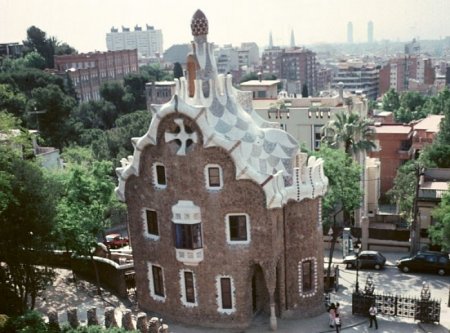
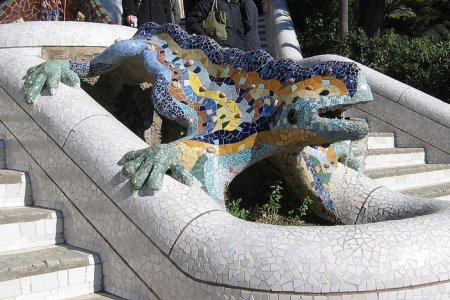
The famous lizard/dragon
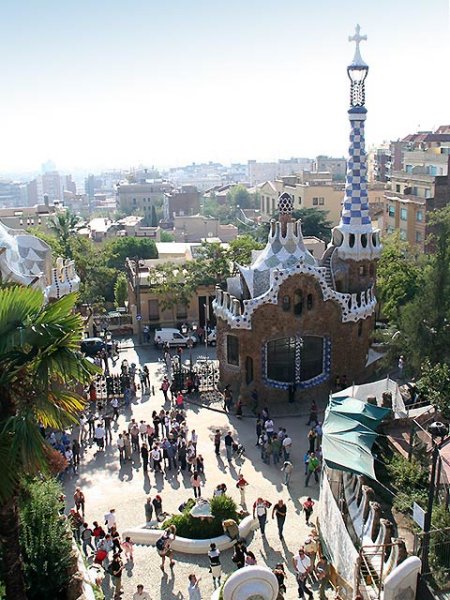
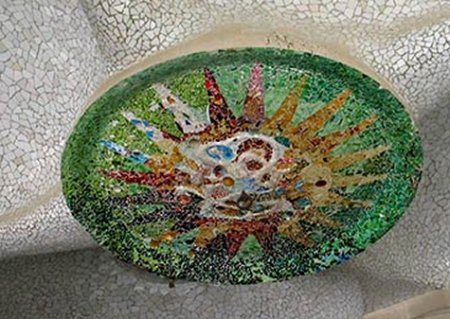
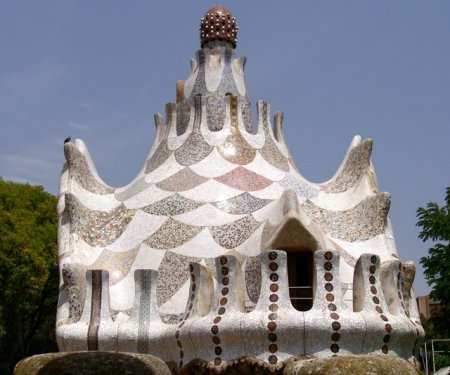
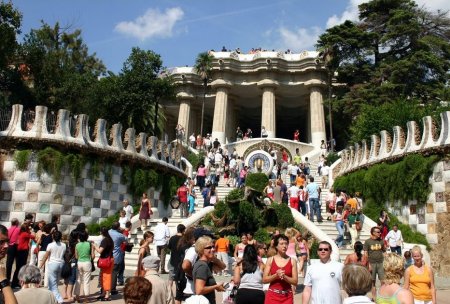
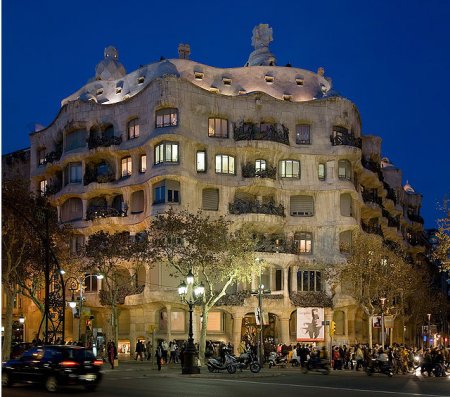
Casa Mila
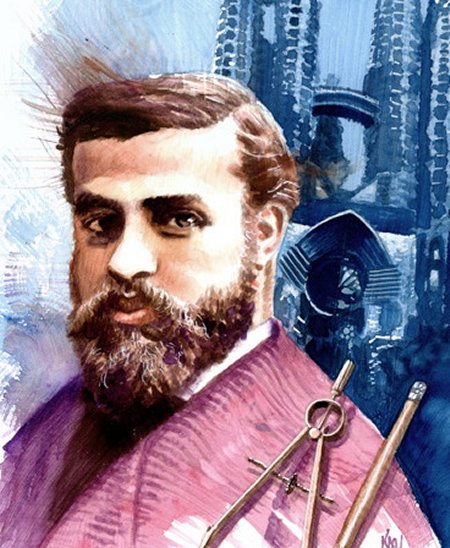 |
|